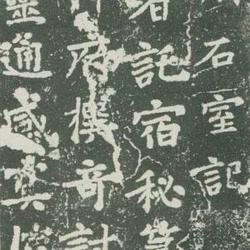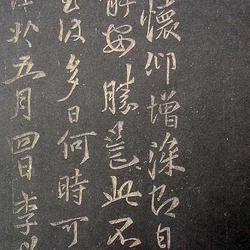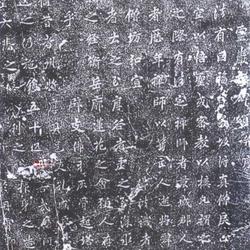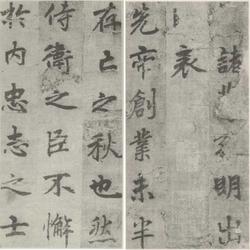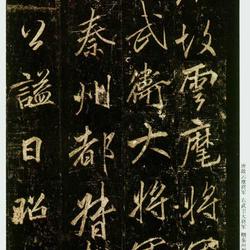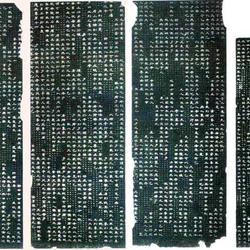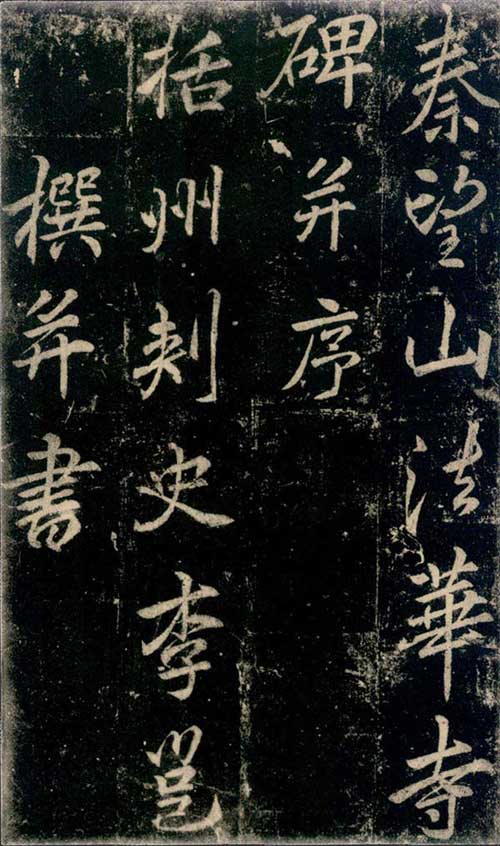
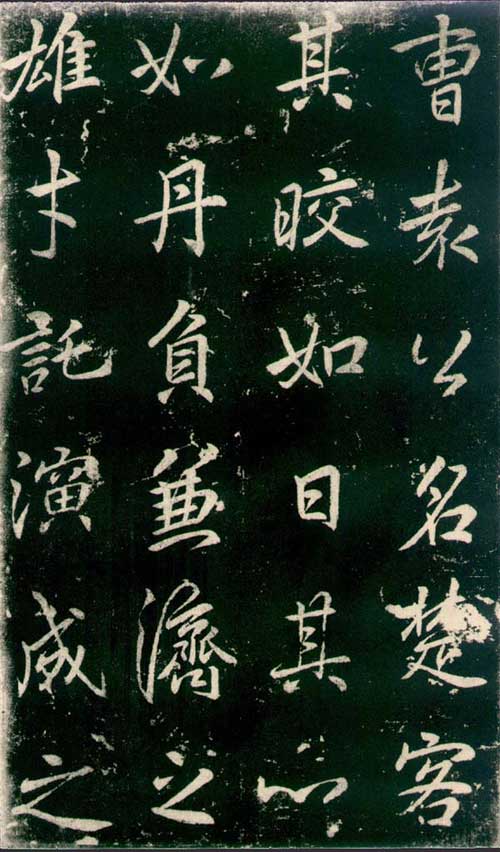
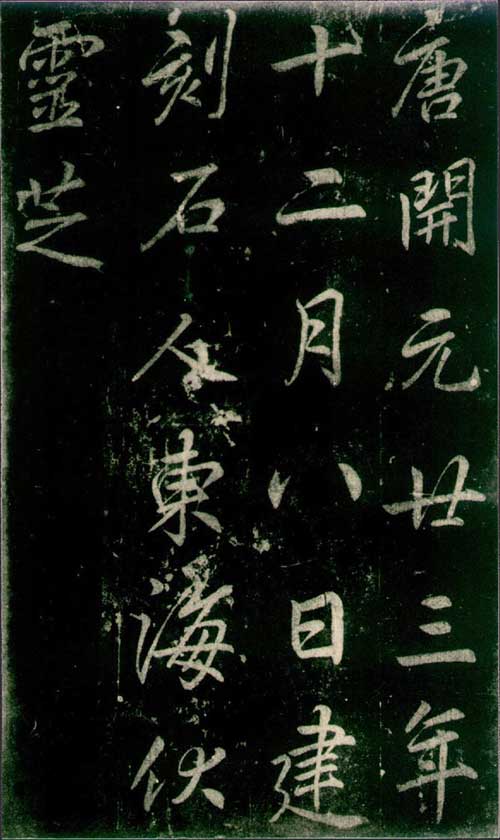
"Fahua Temple Stele", also known as "Qinwangshan Fahua Temple Stele", is a long-lost stele. It was written by Li Yong when he was fifty-seven years old in December of the 23rd year of Kaiyuan in the Tang Dynasty (735). The stone is in Qinwangshan Mountain, Shanyin, Zhejiang. , lost today. There is only one cut and framed copy handed down from generation to generation. He Zizhen obtained it from Han Luqing's family in Wumen. It has four lines per page and six characters per line, totaling 23 pages. The stone carvings of Fu Ganoderma lucidum in the East China Sea are now published in print, providing a piece of calligraphy for calligraphy enthusiasts to study or learn Li Beihai's calligraphy. New information.
He Zizhen is the only one who has preserved the original copy of the Song engraving handed down from generation to generation. He used the knife method to examine it and found that it was indeed a Song engraving, not a Tang engraving, but more like a wood engraving. He Shichang made two hooks and carved one stone. The Song rubbing is now in the Shanghai Museum, and there was a photocopy in the Zhengshu Company in the past. This stele was engraved in the Ming Dynasty. It was engraved in the 11th or 13th year of Kaiyuan, but it was all erected by Ming people.

